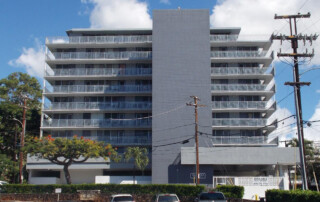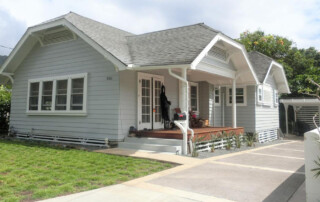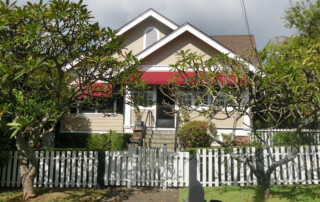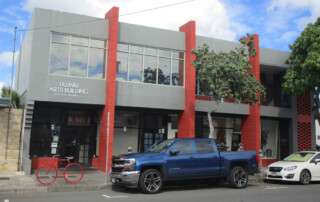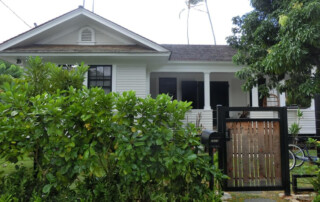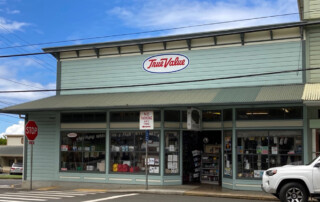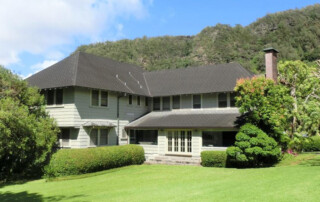La Pietra Townhouse, O‘ahu (Multiple Property Nomination)
Abstract The La Pietra Townhouse is a multiple property nomination. The townhouse was conceived in 1967 and built in 1971 by architect Louis Pursel and developer Bert Williams. The site was landscaped by San Francisco landscape architecture firm Eckbo, Dean, Austin and Williams. The site is comprised of 19 duplexes and 38 units, although the listing is comprised of only10 units. The dwelling units at La Pietra Townhouses are significant on the local level under Criterion C, as a very good example of a luxury townhouse unit built in Honolulu during the late 1960s-early 1970s in a modern Hawai‘i style. The design is based on open flowing interior spaces, use of local lava rock and low-pitched hip-gable roofs, with overhanding eaves and exposed rafter tails. The extensive indoor-outdoor opportunities are typical of Hawai‘i’s regional architecture in the modern style. The dwelling units are significant at the local level under criterion A for their associations with the development of townhouse complexes in Hawai‘i. Unusual for the time, the La Pietra Townhouses are the employment of duplexes, as well as the size of the individual units, with 2,228 square feet of living space, and the size and privacy of the back yards. The development’s amount of green, open space is significant. They are also significant for associations with historic preservation in Hawai‘i. The call for the need to preserve La Pietra, which had been slated for demolition, was among early successful public outcries against a large-scale private development proposal in the name of historic preservation. Unit 1: Al and Vivian Phillips Residence Address 3005 La Pietra Circle TMK (1) 3-1-029:0330001 Nomination Form Unit 2: [...]




